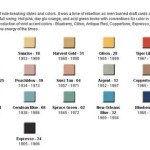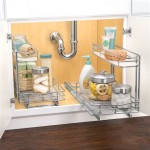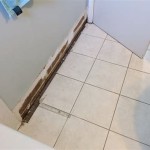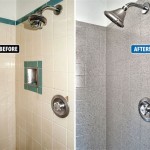Best Sealant for Bathroom Vanity
Bathroom vanities are constantly exposed to moisture, making them susceptible to water damage. A high-quality sealant is essential to protect the vanity's surface and prevent mold and mildew growth. Choosing the right sealant can be challenging with various options available. This article explores the best sealant types for bathroom vanities, considering factors like durability, water resistance, and ease of application.
Key Considerations When Choosing a Sealant
Several factors should be considered when selecting a sealant for a bathroom vanity:
- Water Resistance: The sealant should be highly water-resistant to withstand splashes and spills.
- Durability: A durable sealant will resist cracking, peeling, and shrinking over time, ensuring long-lasting protection.
- Flexibility: The sealant should be flexible enough to accommodate slight movements and temperature changes without cracking.
- Appearance: Choose a sealant that offers a clean, neat finish, complementing the vanity's aesthetics.
- Ease of Application: Select a sealant that is easy to apply, even for those with limited DIY experience.
- Mildew Resistance: A mildew-resistant sealant will prevent the growth of unsightly and unhealthy mold and mildew.
- Adhesion: The sealant should adhere well to various materials commonly used in bathroom vanities, such as ceramic, porcelain, and natural stone.
Types of Sealants for Bathroom Vanities
Several types of sealants are suitable for bathroom vanities, each with its own advantages and disadvantages:
Silicone Sealant
Silicone sealant is a popular choice for bathroom applications due to its excellent water resistance, flexibility, and durability. It's available in various colors to match the vanity and grout. Silicone sealant can withstand high temperatures and is resistant to shrinking and cracking.
Pure Silicone Sealant
Pure silicone sealant offers superior water resistance compared to other types. It's ideal for areas with constant exposure to moisture, such as around the sink and faucet. Pure silicone is also highly durable and resists mildew growth.
Silicone Polymer Sealant
Silicone polymer sealant combines the benefits of silicone and acrylic sealants. It offers excellent adhesion to various surfaces and is more paintable than pure silicone. Silicone polymer sealants are also highly water-resistant and durable.
Acrylic Latex Sealant
Acrylic latex sealant is an affordable and easy-to-use option. It cleans up easily with water and can be painted to match the vanity. However, acrylic latex sealant is less flexible and less water-resistant than silicone, making it suitable for areas with less direct water exposure.
Polyurethane Sealant
Polyurethane sealant offers excellent adhesion and durability. It's highly water-resistant and resistant to chemicals and abrasion. Polyurethane sealant is a good choice for areas subject to heavy use or potential chemical spills.
MS Polymer Sealant
MS polymer sealant is a newer type of sealant that offers superior adhesion, flexibility, and durability. It's highly water-resistant and resistant to UV radiation and temperature fluctuations. MS polymer sealant is often considered a premium option with a higher price point.
Applying Sealant to a Bathroom Vanity
Proper application is crucial for effective sealing. Here are some general steps:
- Surface Preparation: Clean the area thoroughly and remove any existing sealant. Ensure the surface is dry before applying new sealant.
- Masking Tape: Apply masking tape along the edges of the area to create clean lines and prevent sealant from spreading onto unwanted surfaces.
- Sealant Application: Apply a continuous bead of sealant using a caulking gun, ensuring consistent pressure and even distribution.
- Smoothing: Use a wet finger or a sealant smoothing tool to create a smooth, concave surface and remove excess sealant.
- Cure Time: Allow the sealant to cure completely according to the manufacturer's instructions before exposing it to moisture.
Maintaining Bathroom Vanity Sealant
Regular maintenance can extend the life of the sealant and prevent water damage. Here are some maintenance tips:
- Regular Cleaning: Clean the sealant regularly with a mild detergent and water to remove soap scum, mildew, and other buildup.
- Inspection: Inspect the sealant periodically for signs of cracking, peeling, or gaps. Reapply sealant as needed.
- Avoid Harsh Chemicals: Avoid using harsh chemicals or abrasive cleaners on the sealant, as they can damage it over time.
Choosing the Right Sealant
Selecting the best sealant for a bathroom vanity depends on several factors, including the specific application, budget, and desired aesthetic. Carefully consider the properties of each sealant type and choose the one that best meets the project's requirements. Consulting with a hardware store professional can also provide valuable guidance in selecting the appropriate sealant for your specific needs.

How To Seal Vanity Top Storables

Should You Caulk Around A Bathroom Vanity Bathtubber

Finish For A Bathroom Vanity The Wood Whisperer

Choosing The Best Caulk For Bathroom Sink Pep Up Home

Choosing The Best Caulk For Bathroom Sink Pep Up Home

Should You Caulk Around A Bathroom Vanity Bathtubber

How To Refinish Bathroom Vanity Top With Diy Resin Thediyplan

Clear Caulk Sealants The Home Depot

Choosing The Best Caulk For Bathroom Sink Pep Up Home

How To Build Protect A Wood Vanity Top Houseful Of Handmade
Related Posts







